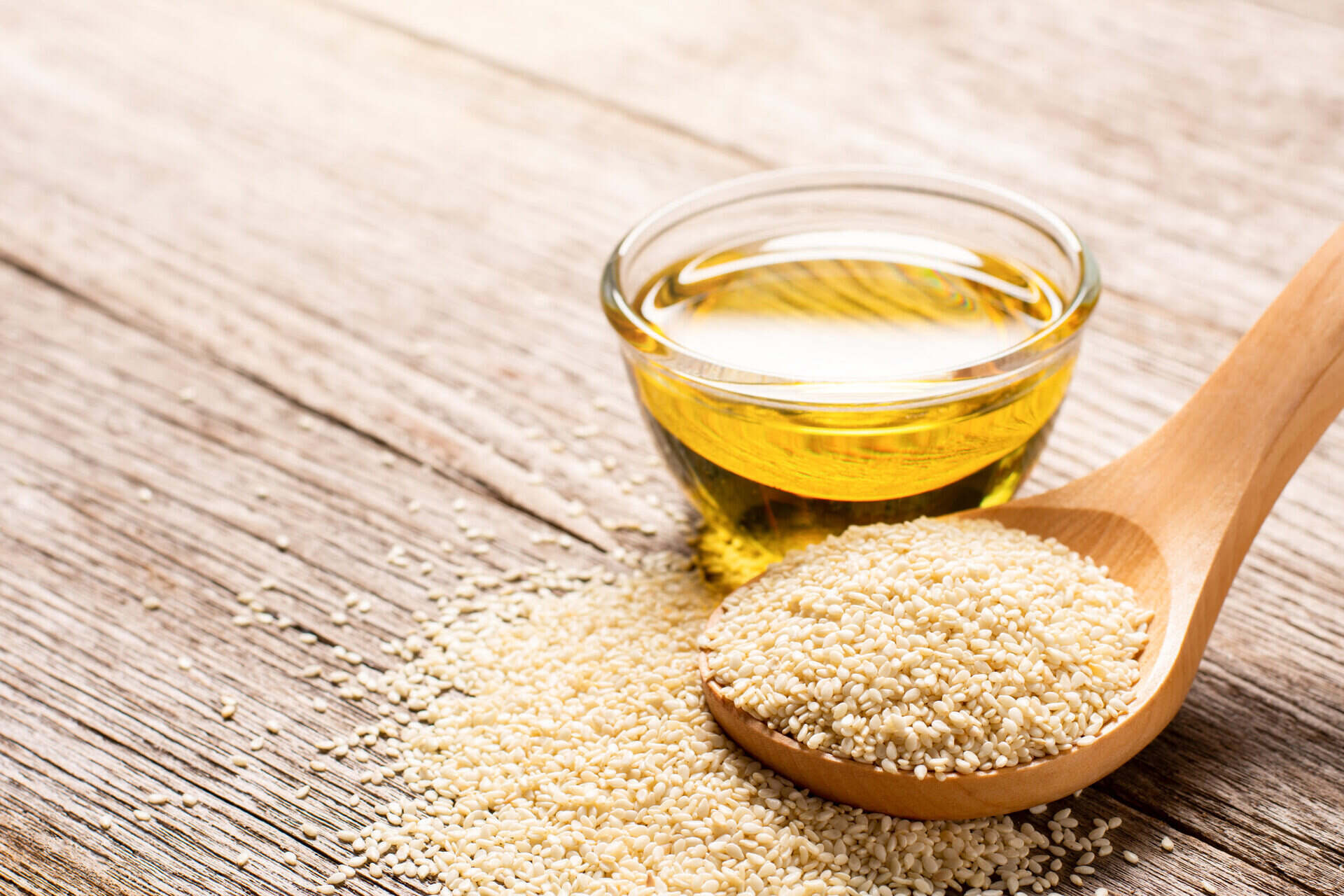

Articles
How To Store Toasted Sesame Oil
Modified: December 7, 2023
Learn how to store and preserve your toasted sesame oil to maintain its freshness and maximize its flavor. Discover essential tips and tricks in this informative article.
(Many of the links in this article redirect to a specific reviewed product. Your purchase of these products through affiliate links helps to generate commission for Storables.com, at no extra cost. Learn more)
Introduction
Toasted sesame oil is a popular ingredient in many cuisines, known for its rich, nutty flavor and aroma. Whether you use it for stir-frying, marinades, dressings, or drizzling over cooked dishes, proper storage is essential to maintain its quality and prolong its shelf life.
Understanding how to store toasted sesame oil correctly will not only ensure that it retains its flavor and freshness but also prevent it from going rancid or losing its nutritional value. In this article, we will explore the importance of proper storage, tips for choosing the right container, the best storage methods, and how to identify signs of spoilage.
By following these guidelines, you can maximize the longevity of your toasted sesame oil and elevate your culinary creations with its distinct and delightful taste.
Key Takeaways:
- Proper storage of toasted sesame oil is crucial for preserving its flavor, freshness, and nutritional value. Choosing the right container and avoiding exposure to light and heat are key to maintaining its quality.
- Whether refrigerated or stored at room temperature, proper storage practices such as sealing the container tightly and checking for signs of spoilage are essential for maximizing the shelf life of toasted sesame oil.
Read more: How Long To Toast Sesame Seeds
Importance of Proper Storage
Proper storage of toasted sesame oil is crucial to maintain its quality, flavor, and nutritional value. Here are a few reasons why it’s important to store your sesame oil correctly:
- Preserving Flavor: Toasted sesame oil gets its distinctive flavor and aroma from the toasted sesame seeds. However, exposure to light, heat, and air can cause the oil to become rancid, resulting in an unpleasant taste and odor. By storing it properly, you can preserve its natural flavors and enjoy its delicious nutty profile.
- Extended Shelf Life: Sesame oil, like any other oil, has a limited shelf life. Proper storage practices help prolong the freshness and prevent spoilage. This allows you to use your sesame oil for a longer period, reducing wastage and ensuring that your recipes consistently have that savory touch.
- Retaining Nutritional Value: Sesame oil is a valuable source of essential fatty acids and antioxidants. These beneficial compounds can start to degrade when exposed to unfavorable conditions, such as heat and air. By storing the oil properly, you can preserve its nutritional integrity and continue to reap its health benefits.
- Cost-Effective: Quality toasted sesame oil can be quite expensive. By storing it correctly, you can avoid the need to replace it frequently due to spoilage. This not only saves you money but also guarantees that you always have a fresh supply on hand whenever you need it.
Given these reasons, it is clear that proper storage practices are essential for maintaining the quality, freshness, and nutritional value of toasted sesame oil. Now, let’s delve into the key factors to consider when choosing the right container for storing your sesame oil.
Choosing the Right Container
When it comes to storing toasted sesame oil, selecting the right container is crucial. Here are some factors to consider:
- Material: Opt for containers made of glass or non-reactive metals, such as stainless steel or opaque plastic. These materials are less likely to interact with the oil, maintaining its quality and flavor.
- Dark and Opaque: Choose a container that is dark or opaque to protect the oil from light exposure. Light can cause the oil to degrade faster, leading to a loss of flavor and nutritional value. Many sesame oil suppliers package their oils in dark glass bottles for this reason.
- Tight Seal: Ensure that the container has a tight-fitting lid or cap to prevent air from entering. Oxygen can initiate oxidation, leading to rancidity and a shorter shelf life for your sesame oil.
- Size: Consider the size of the container relative to the amount of sesame oil you usually use. It’s best to store the oil in smaller containers to minimize air exposure and oxidation.
- Stability: Choose a container that is stable and won’t easily tip over. Sesame oil can be sticky, and spills can be challenging to clean up. A stable container reduces the risk of accidents and waste.
Now that you have chosen the right container for your toasted sesame oil, let’s explore the best methods for storing it properly.
Storing Toasted Sesame Oil Properly
To ensure the longevity and freshness of your toasted sesame oil, follow these steps for proper storage:
- Transfer to a Suitable Container: If your sesame oil comes in a plastic or inferior-quality container, consider transferring it to a high-quality glass or non-reactive metal container. This will help preserve its flavor and protect it from light and air.
- Ensure a Tight Seal: Make sure the container’s lid or cap is securely tightened to prevent air from entering. This will help slow down the oxidation process and extend the shelf life of the oil.
- Store in a Cool, Dark Place: Find a cool and dark spot in your kitchen or pantry to store the sesame oil. Avoid areas near stoves, ovens, or windows, as exposure to heat and light can degrade the oil’s quality. A cupboard or pantry shelf away from direct sunlight is ideal.
- Avoid Temperature Fluctuations: Temperature fluctuations can negatively affect the quality of sesame oil. It is best to store it at a constant temperature, away from direct heat sources or areas prone to temperature changes.
By following these storage guidelines, you can protect the flavor, aroma, and quality of your toasted sesame oil. However, the question of whether to refrigerate or store at room temperature often arises. Let’s explore both options to help you make an informed decision.
Refrigeration vs. Room Temperature Storage
The decision to refrigerate or store toasted sesame oil at room temperature depends on personal preference and the specific brand or type of oil you have. Here’s a breakdown of the advantages and considerations for both options:
- Refrigeration:
- Refrigerating toasted sesame oil can prolong its shelf life, especially if the oil is unopened. The cold temperature helps slow down the oxidation process and keeps the oil fresher for longer.
- If you live in a hot and humid climate, refrigeration can help prevent the oil from going rancid quickly.
- Refrigeration is particularly recommended for high-quality, unrefined sesame oils that contain more impurities and require extra care to maintain their freshness.
- Room Temperature Storage:
- Storing sesame oil at room temperature is convenient and allows for easy accessibility, especially if you use it regularly in your cooking.
- If you live in a moderate climate with stable temperatures, room temperature storage should be sufficient to keep the oil fresh and maintain its quality.
- Make sure to store the oil in a cool, dark place away from heat sources and direct sunlight to prevent it from degrading quickly.
Ultimately, the choice between refrigeration and room temperature storage depends on factors such as climate, oil quality, and personal preference. If you decide to refrigerate your sesame oil, be aware that it may thicken in the cold temperature. However, this is normal and the oil will return to its liquid state once brought back to room temperature.
Regardless of your chosen storage method, there are a few universal precautions to take to protect your toasted sesame oil from degradation.
Store toasted sesame oil in a cool, dark place, away from direct sunlight and heat sources. Make sure the bottle is tightly sealed to prevent oxidation and maintain its flavor.
Read more: How Long Do Toasted Sesame Seeds Last
Avoiding Exposure to Light and Heat
Both light and heat can have a detrimental effect on the quality and shelf life of toasted sesame oil. Here are some guidelines for avoiding exposure to light and heat:
- Store in a Dark Container: As mentioned earlier, choose a dark or opaque container to protect the oil from light exposure. This helps to maintain the oil’s flavor and prevent oxidation.
- Avoid Direct Sunlight: Place the container in a spot away from direct sunlight. Sunlight can break down the oil’s delicate compounds, resulting in a loss of flavor and nutritional value.
- Avoid Heat Sources: Keep the sesame oil away from heat sources such as stoves, ovens, and radiators. Excessive heat can cause the oil to oxidize rapidly and become rancid.
- Minimize Temperature Fluctuations: Fluctuations in temperature can accelerate the degradation process. Choose a storage location where the oil will be exposed to consistent, moderate temperatures.
By taking these precautions, you can protect your toasted sesame oil from the harmful effects of light and heat, ensuring its freshness and preserving its delightful flavor.
Now that we’ve covered how to avoid light and heat exposure, let’s discuss how to check for signs of spoilage in your sesame oil.
Checking for Signs of Spoilage
It’s important to regularly check your toasted sesame oil for any signs of spoilage to ensure that it is still safe to use. Here are some indicators to watch out for:
- Off Odor: If your sesame oil has developed a rancid or unpleasant smell, it is likely spoiled. Fresh sesame oil has a distinct nutty aroma, so any off or foul odor should be a cause for concern.
- Strange Appearance: Inspect the oil for any changes in color or clarity. Spoiled sesame oil may appear cloudy, dark, or have particles floating in it.
- Off Taste: Taste a small amount of the oil to check for any strange or off flavors. Spoiled sesame oil can have a bitter, sour, or rancid taste.
- Expired Shelf Life: Take note of the expiration date on the bottle. If the oil has passed its expiry date, it’s best not to use it, as the quality and freshness may have deteriorated.
If you notice any of these signs, it is advisable to discard the sesame oil. Using spoiled oil can lead to unpleasant taste, digestive discomfort, and potential health risks.
Now that you know how to check for spoilage, let’s explore some tips and tricks to extend the shelf life of your toasted sesame oil.
Tips and Tricks for Extended Shelf Life
To prolong the shelf life of your toasted sesame oil, consider these tips and tricks:
- Buy in Small Quantities: If you don’t use sesame oil frequently, it’s best to purchase smaller quantities to minimize the time it takes to consume the oil. This reduces the risk of it going bad before you can use it up.
- Properly Seal the Container: After each use, make sure the container is tightly sealed to prevent air from entering. Oxygen exposure speeds up the oil’s oxidation process, leading to a shorter shelf life.
- Store in the Fridge: If you have limited use of the oil, consider storing it in the refrigerator. This helps slow down the oxidation process and extends its freshness. However, be aware that chilled sesame oil may solidify, so you may need to bring it to room temperature before using it.
- Avoid Contamination: Always use clean utensils when handling the oil to prevent cross-contamination. Avoid introducing moisture or food particles into the container, as this can promote the growth of bacteria and shorten the oil’s shelf life.
- Label and Date: To keep track of the oil’s freshness, label the container with the purchase or opening date. This way, you can monitor its shelf life and usage more effectively.
- Keep Away from Spices and Strong Fragrances: Avoid storing toasted sesame oil near strong-smelling spices or ingredients, as the oil can absorb those odors, compromising its flavor. Keep it in a separate area to maintain its distinct nutty aroma.
By following these tips, you can extend the shelf life of your toasted sesame oil and ensure that it remains fresh and flavorful for as long as possible.
Now that you’re equipped with knowledge on how to properly store and maintain toasted sesame oil, you can confidently incorporate it into your culinary adventures and savor its delightful taste.
Remember, maintaining the freshness and quality of your sesame oil not only enhances your dishes but also ensures that you make the most out of this versatile and delicious ingredient.
Conclusion
Proper storage of toasted sesame oil is essential for preserving its rich flavor, aroma, and nutritional value. By following the right storage practices, you can extend the shelf life of your sesame oil and keep it fresh for longer.
Choosing the right container, whether it’s dark glass or non-reactive metal, helps protect the oil from light and maintain its quality. Storing the oil in a cool, dark place away from direct heat sources and temperature fluctuations further ensures its longevity.
While refrigeration can be beneficial, especially in hot and humid climates, room temperature storage is also suitable if you live in a moderate environment. Whichever method you choose, be mindful of avoiding exposure to light and heat, as they can degrade the oil’s quality.
Regularly check for signs of spoilage such as off odor, strange appearance, and off taste. If the oil has expired or shows any signs of spoilage, it is best to discard it to avoid any potential health risks.
To extend the shelf life of your toasted sesame oil, consider buying in small quantities, properly sealing the container after each use, and storing it in the refrigerator if needed. Avoid contamination and keep the oil away from strong fragrances or spices to maintain its distinct flavor.
By implementing these tips and tricks, you can ensure that your toasted sesame oil remains fresh, flavorful, and ready to elevate the taste of your favorite dishes.
So, the next time you reach for that bottle of toasted sesame oil, remember to store it correctly and enjoy the full richness and nutty goodness it brings to your culinary creations. Happy cooking!
Frequently Asked Questions about How To Store Toasted Sesame Oil
Was this page helpful?
At Storables.com, we guarantee accurate and reliable information. Our content, validated by Expert Board Contributors, is crafted following stringent Editorial Policies. We're committed to providing you with well-researched, expert-backed insights for all your informational needs.















0 thoughts on “How To Store Toasted Sesame Oil”